Robinson Crusoe was born in 1632 in England. In 1651, he disobeys his father’s wishes and sets out to sea. The ship sinks, but all crew members survive.
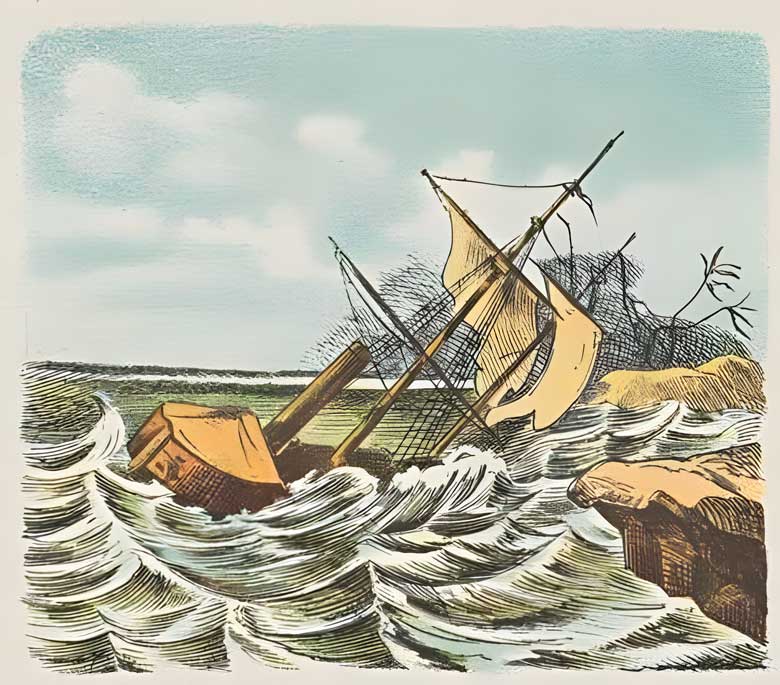
Later, during one of Crusoe’s sea travel, pirates seize the ship, and Robinson becomes the personal slave of the captain for two years. Finally, during a fishing trip, he escapes with Xury, another slave, and they sail to the African coast.
On their way, they encounter a Portuguese ship and sail to Brazil, and Crusoe sells Xury to the captain. For four years, Robinson Crusoe lives in Brazil as a sugar plantation owner.
Then, he sails to Guinea to buy slaves. During a storm, the ship is beached in the Caribbean. Robinson is the only survivor and ends up on an island.
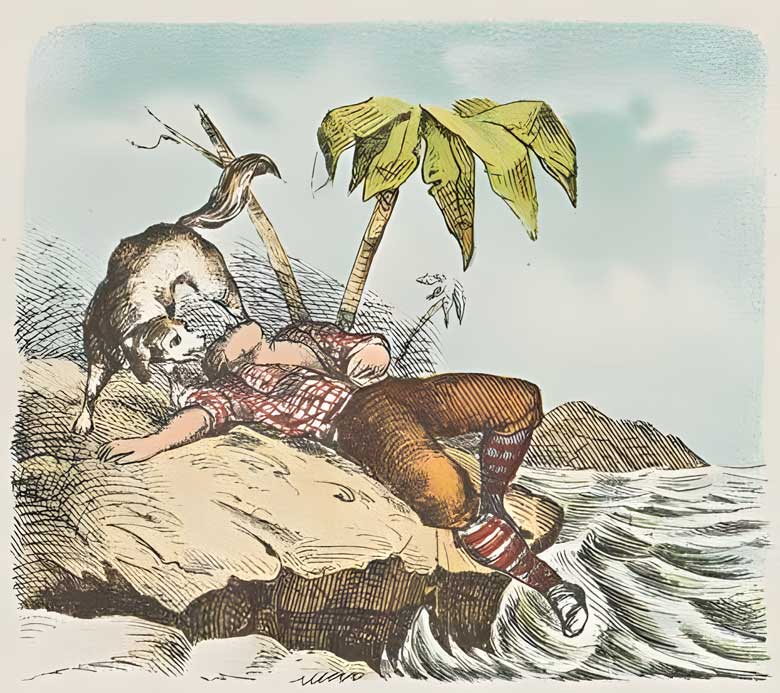
Robinson Crusoe manages to save supplies, equipment and animals from the ship’s wreck. He discovers that the island is uninhabited. With time, he builds himself a camp where he can live.
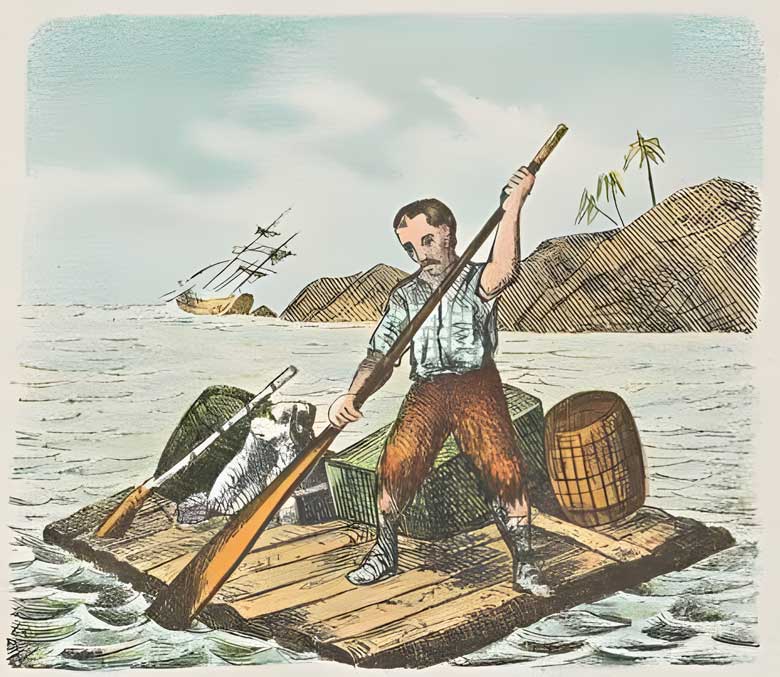
Crusoe’s life on the island begins on September 30, 1659. His everyday life consists of hunting, finding supplies, building his cave, etc., to improve his living conditions on the island.
Because of the rain, Robinson becomes very ill. After a Vision, he turns to God and prays for salvation. He survives his illness and begins to read the Bible he saved from the ship.
Crusoe explores the island, finds useful plants and crops, and sets up a second home in a valley. He also expands and improves his cave.
Robinson Crusoe discovers new land but assumes natives hold it and doesn’t make plans to reach there. He also captures a parrot, teaches it to speak, and tames a goat.
Robinson learns to make pottery and uses it to store his grain. He also creates new clothes from goat skins, as his clothes are rotting after four years on this island. He worries about encountering cannibals on the land he sighted from the island.
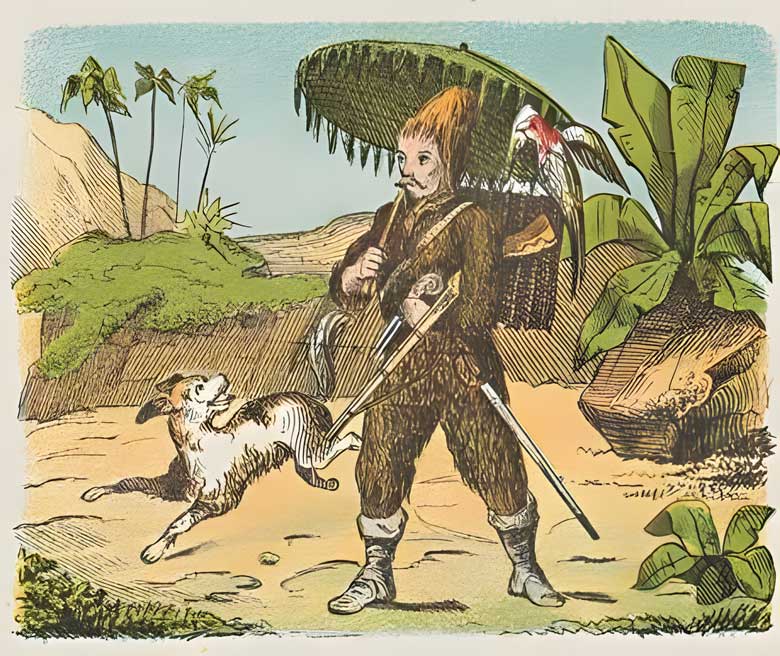
After five uneventful years, Robinson Crusoe successfully builds a boat to explore the area around the island but is caught in-between two currents and returns to the land.
After living for about 10 years on the island, Robinson Crusoe decides to domesticate goats. He catches some and feeds them before putting them into an enclosure. The goats provide Crusoe with meat, butter and cheese, for which he is grateful to God.
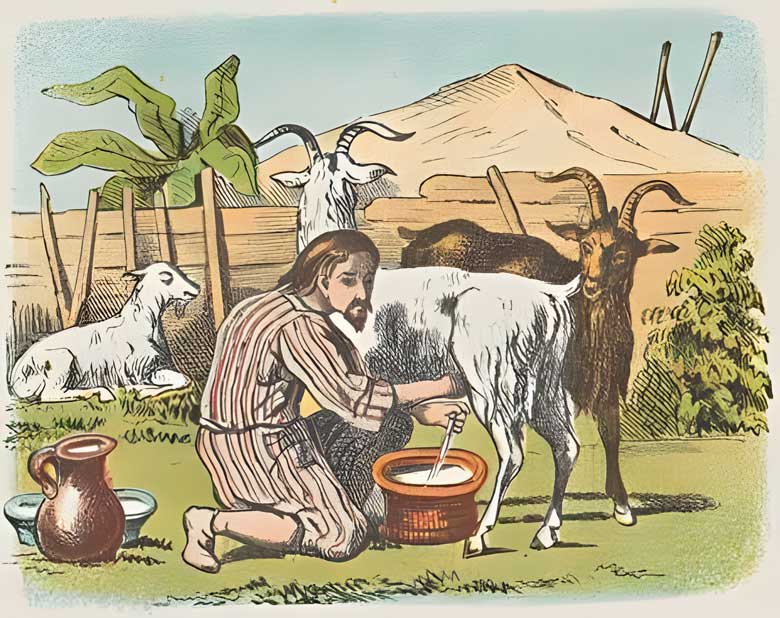
Robinson Crusoe sees himself as the island’s king, with his cave as his castle and the bower as his country home. He takes short trips with his canoe and enjoys his fields and goats. However, his peace is disturbed when he discovers a human footprint on the beach. It causes him to fear that the natives from the mainland may find him.
In 15 years, no one found him, so despite his fear, he decides to fortify and secure his homes rather than destroy them.
Robinson Crusoe becomes increasingly anxious that the natives might discover him and his settlements. While searching for a new isolated location, he discovers a beach covered with bones and remains of human bodies and realises that the natives are cannibals.
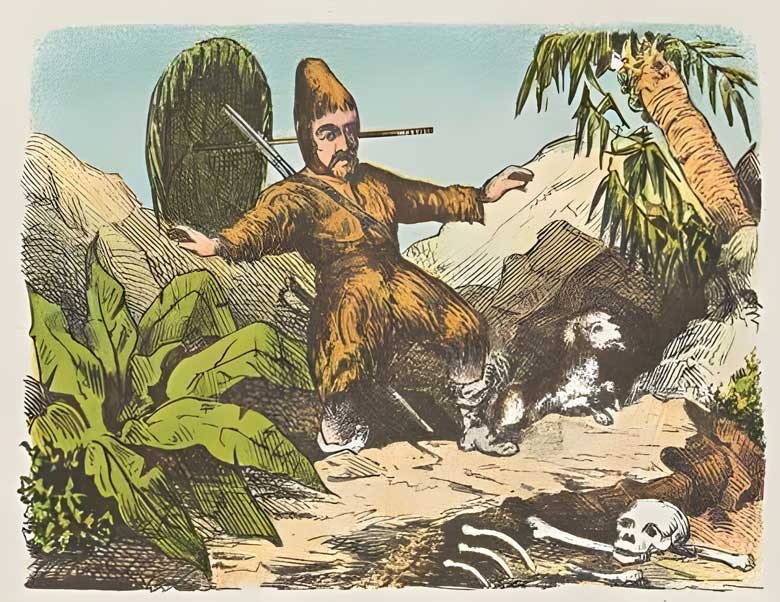
After living on the island for 23 years, Robinson Crusoe’s animal family has grown, but he still yearns for human companionship. He spots a group of natives on the shore and finds human remains among their fire, confirming they are cannibals. He spends over a year worried about their return.
He also spots a Spanish ship in distress and finds no survivors except a dog. Nevertheless, he salvages supplies, including gunpowder, clothes and shoes.
Robinson Crusoe helps a captive escape from the cannibals. He names him Friday and makes him his servant. Crusoe teaches him English and provides everything he needs, including clothes. As a result, Friday becomes a loyal servant and companion to Crusoe.
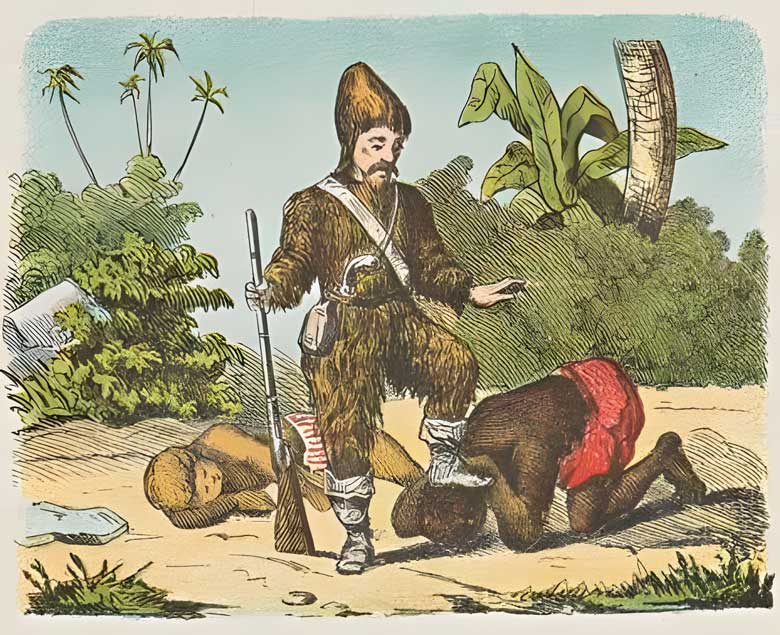
Robinson Crusoe also teaches Friday about Christianity, and Friday is interested in learning. He reveals that he comes from a tribe on the mainland and that they have seen ships before. He wants to return to his tribe and teach them Christianity to prevent them from eating humans.
Robinson and Friday build a boat and plan to leave the island. However, their preparations are interrupted when a group of natives arrive with captives. After seeing one of the captives is a white man, they attack and kill most of the natives, rescuing the man who turns out to be a Spanish survivor. They also find Friday’s father tied up in a canoe. The surviving natives flee the island, and Crusoe and Friday remain vigilant about security.
Crusoe and the trustworthy Spaniard plan to rescue the other Spaniards from the cannibals’ tribe. Later, an English longboat arrives with three prisoners, victims of a mutiny.
Crusoe helps the captain, as he promises to take him, Friday, and the others back to England. The leader of the mutineers is killed, and the others surrender.
Crusoe, Friday, and the others capture the remaining mutineers and keep them prisoner in Crusoe’s cave. The mission is a success, as the captain and his men retake their ship.
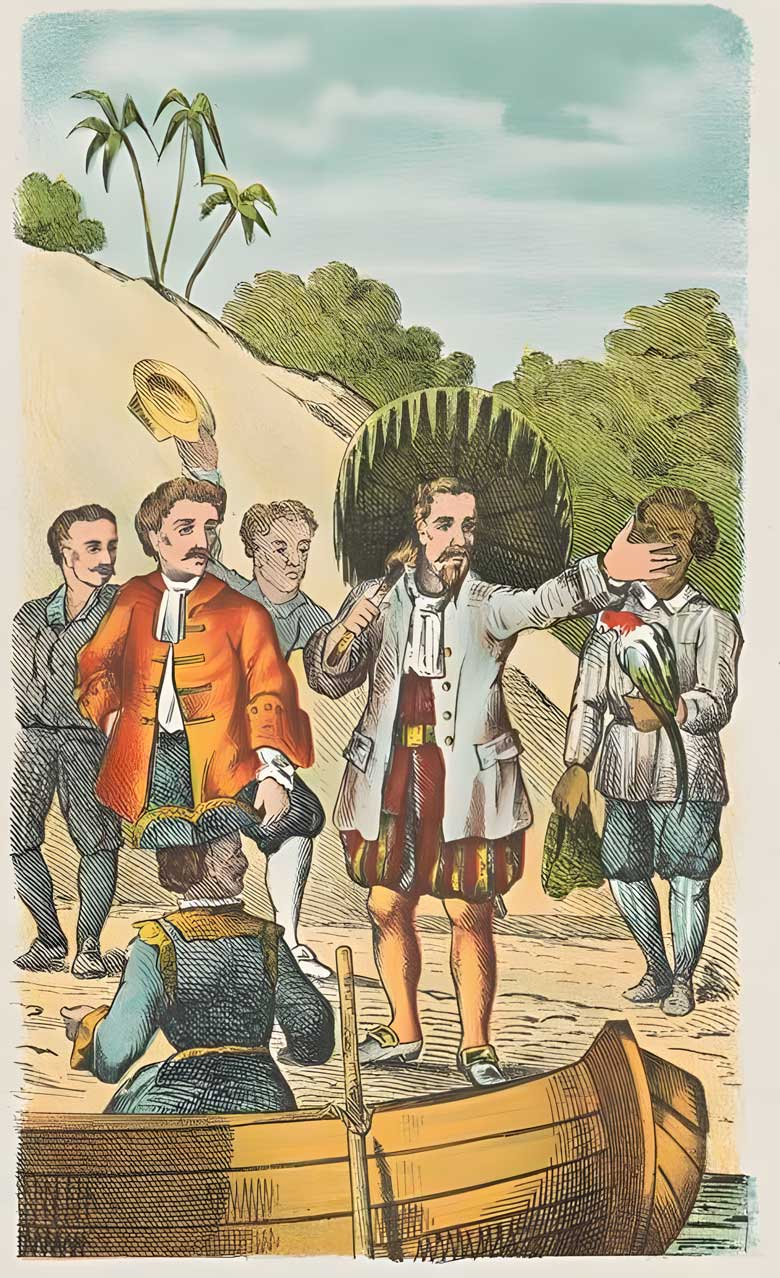
Robinson Crusoe returns to England after 35 years, discovering that most of his family has died. He decides to go to Lisbon to learn about his plantation in Brazil and discovers that he has a healthy fortune.
Later, he accompanies his nephew on a voyage to the East Indies and revisits his island, discovering the colony has grown. He says his adventures could fill another ten years and a second book.
